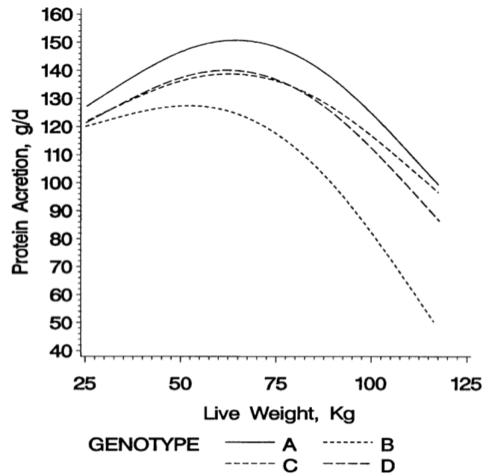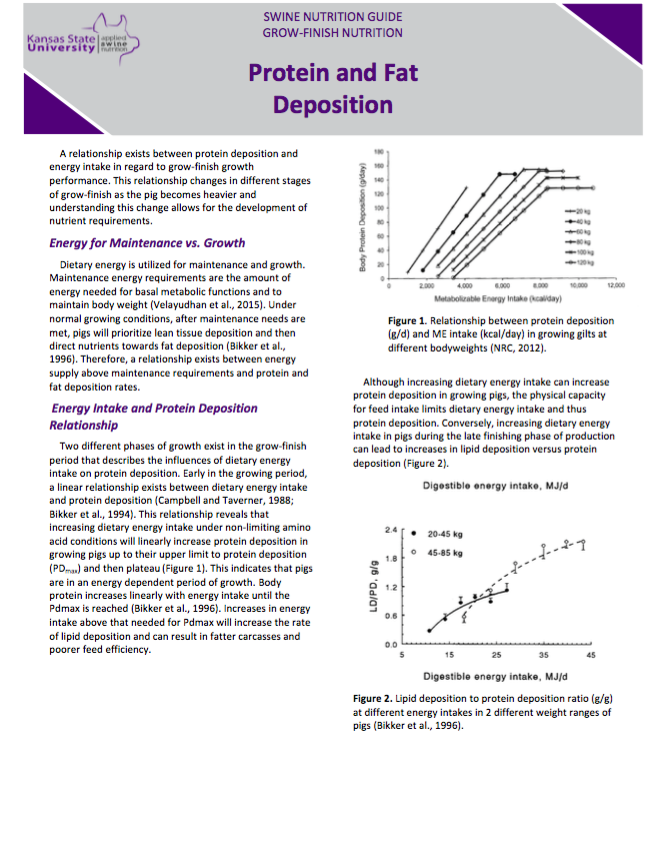Genetic Differences
Understanding Pdmax allows for a relationship to be established between energy intake and body protein deposition at various stages of the grow-finish period in a production system (de Lange, 2001). Genetic line being used should be taken into consideration as different genotypes exhibit different protein accretion rates at different body weights (Figure 5).

Figure 5. Differences in protein accretion rate between 4 different genetic lines (Schinckel and de Lange, 1996).
Different genetic lines will reach PDmax at different points in the grow-finish period. After Pdmax is reached, rates of protein accretion decline. In general, genetic lines selected for high protein accretion will reach Pdmax at heavier weights and the rate of protein accretion decline will be less than genetic lines selected for average or low protein accretion. Furthermore, under commercial conditions, grow-finish pigs can be exposed to numerous environmental stressors. Genetic lines will respond differently to environmental stressors such as high stocking density, heat stress, disease, etc. and this can significantly limit expression of their true genetic potential for Pdmax. Due to this, producers should understand the environmental conditions of their production system so that they can better understand their specific protein accretion rates and its relationship with energy intake to establish nutrient requirements.
In summary, a relationship exists between energy intake and protein deposition. Limiting energy intake in early phases of the grow-finish period can negatively affect protein deposition and growth, but overfeeding energy in later periods can lead to increases in lipid versus protein accretion. Producers should also understand that differences in the expression of this relationship exist between gender and genetic lines and must be considered when developing nutrient requirements.
